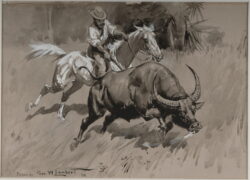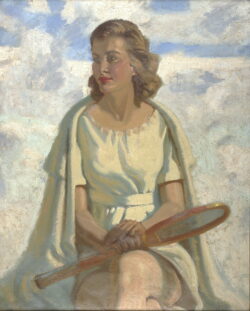
In the late nineteenth century (1800’s), Australia was made up of of six British colonies, all governed separately, which were united into one nation in 1901 with Federation. During the 1890s there was a building sense of nationhood for non-Indigenous Australians in the lead up to Federation.
By this time, Australia had many buildings and factories, most people were living in cities such as Melbourne and Sydney. Melbourne became one of the wealthiest cities in the world during this time, with a thriving economy built on the export of beef, wheat and wool. For the first time since colonisation, the immigrant population was lower than the Australian born population, leading to a growing sense of nationalism and of common identity.
This shared sense of nationhood for non-Indigenous citizens was shown in writing, poetry and art. A developing national identity was understood to be built on a shared experience of a uniquely Australian landscape, whether a flourishing city, a rugged coastline or the untamed ‘bush.’ Strong was the idea of a national identity created through the struggle and labour in the landscape. There was a sense of passion and heroism for the honest nature of agricultural work, which referred back to the pioneering history of the early colonial settlers.
Australia’s Identity Today – Group discussion
Guiding questions.
What is Australian Identity?
How do you think Australia’s identity has changed since the 1800’s? What factors have influenced these changes?
What does it mean to be Australian?
How might where you live within Australia change your sense of identity?
Look at the image below of an artwork by artist Fred Leist, titled Australian Girl from the early 20th century. Why do you think the artist has given this title? Research what was happening in Australian society during this time.

Come and see this artwork in the HINTON Gallery at NERAM.
Image credit: Fred Leist, Australian Girl n.d., oil on canvas, 104 x 86 cm, Gift of Howard Hinton 1946, Sponsored by The Packsaddle Fundraising Committee of 2018 for the Adopt an Artwork Program.
Image credit: George W. Lambert, Buffalo Hunting, Northern Australia , 1898, Watercolour and gouache, Gift of Howard Hinton Collection, 1934